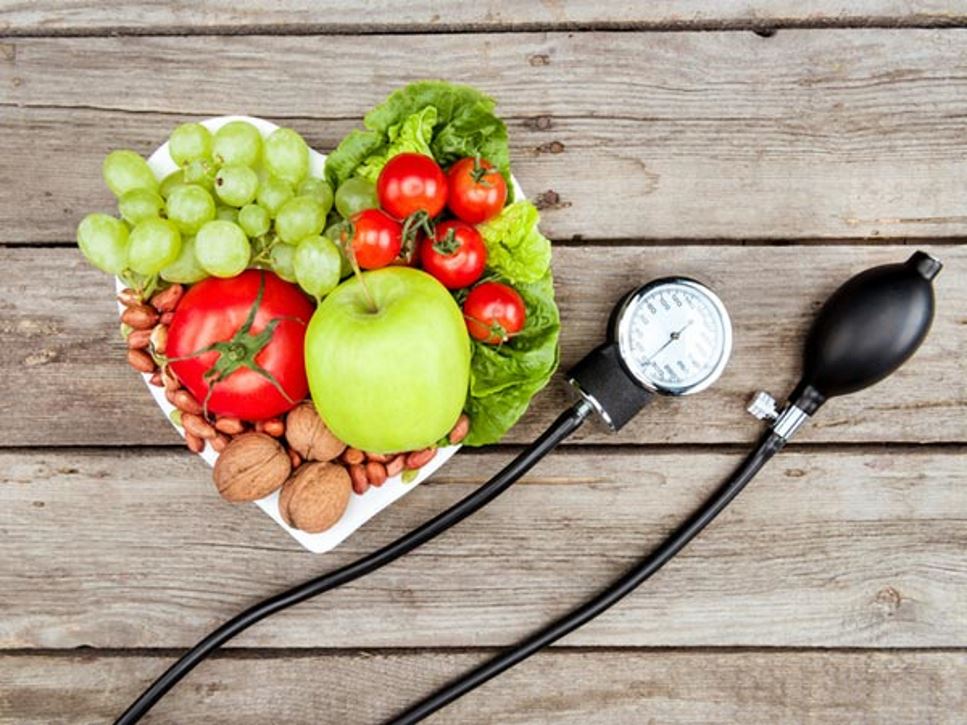According to the Centers for Disease Control and Prevention, around 37 million U.S. adults have high blood pressure, a major risk factor for heart disease, stroke, congestive heart failure and kidney disease.
What Is High Blood Pressure?
The CDC defines a normal blood pressure as a systolic (top) number of less than 120 mmHg and a diastolic (bottom) number of less than 80 mmHg. People with systolic readings of 120 to 129 mmHg, even when diastolic readings remain under 80 mmHg, are considered at risk for high blood pressure or could be told they have prehypertension. A diagnosis of high blood pressure is usually confirmed by a doctor after a patient has had more than one elevated reading, which may begin at 130 mmHg or higher over 80 mmHg or higher.
Follow a Heart-Healthy Eating Plan
People with high blood pressure should consult a physician and follow a heart-healthy diet, such as the Dietary Approaches to Stop Hypertension (DASH) eating plan. A balanced DASH eating plan based on 2,000 calories per day would include:
- 8 to 10 servings of fruits and vegetables
- 6 to 8 servings of grains — such as whole-wheat bread, pasta, pitas, oatmeal, brown rice
- 3 servings of fat-free or low-fat dairy products
- 6 or fewer servings per day of lean meat, poultry and fish
- 2 to 3 servings per day of fats and oils — limiting saturated fat intake
- 4 to 5 servings per week of nuts, seeds and legumes
- Limited amounts of sweets and added sugars — 5 or fewer servings per week
Less than 2,300 milligrams per day of sodium is recommended for individuals 14 years of age and older, and less for children 13 years of age and younger. Adults with prehypertension and hypertension may benefit from reducing their sodium intake further, but should discuss this with their health care provider. Lowering sodium intake can be especially beneficial in combination with the DASH eating plan. And, according to the 2020-2025 Dietary Guidelines for Americans, research has shown a direct relationship between sodium intake and blood pressure, and decreasing sodium intake "can help improve blood pressure control and reduce risk of hypertension."
To get an assortment of nutrients, eat a variety of foods and be adventurous in the produce section by choosing a colorful fruit or vegetable you have never tried before. You can encourage your family to pick a new fruit or vegetable each time you shop, as well as including fruits and vegetables that contain potassium such as tomatoes, beans and oranges.
Consider planning at least two vegetarian dinners per week with beans as the main source of protein instead of meat. Experiment with fresh herbs and dried spices instead of salt, choose whole-grain products and add nuts to salads and cereal. Make sure to include lean meat, poultry and fish into your eating plan, which can add great sources of protein, iron, zinc and the B vitamins. Finally, add variety by snacking on fresh vegetables with bean dip or eat salsa in place of other condiments with scrambled eggs, on a baked potato or with vegetables.
The bottom line in lowering blood pressure is to follow a heart-healthy eating plan, maintain a healthy weight and increase physical activity. Consult a registered dietitian nutritionist to start combating high blood pressure and for guidance regarding healthier food choices.
Find a Nutrition Expert
Looking for credible nutrition information and recommendations? The Academy of Nutrition and Dietetics' network of credentialed food and nutrition practitioners are ready to help!

